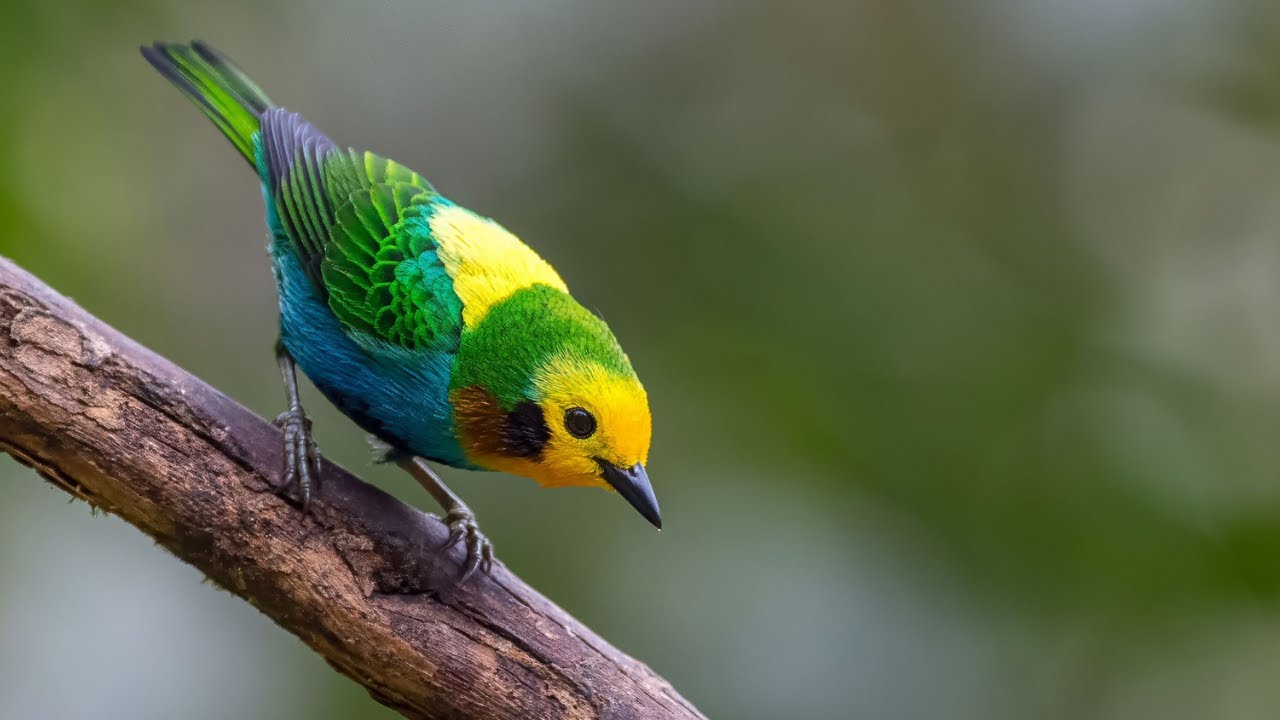Distantly Related Tanagers Independently Evolve Similar Beaks
SDSU alumna Amelia-Juliette Demery (18) took a deep dive into 12 million years of bird evolution.

For her master's thesis at San Diego State University, Amelia-Juliette Demery (evolutionary biology ‘18), traveled to museums around the country to study tanagers, the world’s largest family of songbirds. Often sporting brilliantly colored plumage, nearly 400 different species inhabit a wide range of habitats in Central and South America — from the Amazon basin to the cloud forests of the Andes.
“When you go to a museum of bird collections for the first time, tanagers are nine times out of 10 one of the drawers that are opened up because they are so colorful and so diverse — little songbirds that look like gemstones,” she said.
The family even includes Charles Darwin's famous Galápagos finches, whose diversity of beak shapes helped inspire the theory of evolution by natural selection.
The tanagers split from other bird families around 12 million years ago, followed by an explosion of morphological diversity, according to biologist Kevin Burns, Demery’s thesis advisor.
PHOTO: SDSU alumna Amelia-Juliette Demery ('18) and her advisor, professor Kevin Burns, found similarities in beak shape and diet between distantly related tanager species. (Courtesy of Kevin Burns)
Following in Darwin’s footsteps
In his journals from the voyage of the HMS Beagle, Darwin noted that closely related species of finches on the tiny Galápagos islands possessed a variety of beak shapes and sizes, hinting that their beaks might be adapted to the food they eat.
Continuing this line of inquiry at a larger scale, Demery measured the length, width and depth of beaks from nearly every species in the tanager family tree.
“The beak is one of the primary tools that a bird can use to interact with its environment and survive,” she said. “It's a very intricate, complex tool.”
Demery’s comparative analysis revealed a relationship between the beak morphology of different groups of tanagers and whether they eat seeds, fruit, nectar or insects. For example, Diglossa flowerpiercers have thin, arched beaks with small needlelike hooks at the ends. This beak shape allows them to pierce flowers and retrieve the nectar within.
Similar, but different
Some animals evolve similar characteristics despite being distantly related to each other, a process called convergence. For example, Arctic foxes and snowshoe hares turn white in the winter — seasonal camouflage helps them avoid the predators in their habitat.
Demery wanted to know to what extent distantly related groups within the tanager family have also undergone convergent evolution by independently evolving similar beak shapes.
Since the genetic relationships between tanager species are already known — much of that work having been carried out over the past 25 years in Burns’s lab at SDSU — Demery could map beak shape and diet onto the family tree and use software analysis tools to determine the amount of convergence that has occurred.
“We found that over half of the tanagers were converging towards similar beak shapes,” said Demery.
For example, the Diglossa flowerpiercers, along with Dacnis and Conirostrum tanager groups all have narrow beaks with “little pincers and forceps so that they can pluck at insects just as well as they can go into flowers to take nectar,” she said. Saltator and Sporophila are two other convergent tanager lineages. “These groups have relatively big conical beaks for crushing a lot of seeds,” she added.
But the story is more complicated because evolutionary shifts in tanager beak shape have not always kept up with shifts in diet. The researchers believe that structural constraints on convergent evolution may help explain why.
“Once they evolve towards one type of beak shape and size, it would be difficult to evolve towards another extreme,” said Demery. “At some point did their genetic program kind of run out of ideas, if you will?”
This makes convergence especially relevant in the face of modern threats like climate change.
“It's extremely important to be able to understand how an organism can adapt, looking at convergence and predicting how far a species can continue to persist when things are changing — until they can't,” said Demery. “This work really, I hope, can help people think about those types of questions.”
Demery and Burns reported the results of the study in the journal Evolution.
Following her passions
Passionate about intersectionality in STEM, Demery has also co-authored a paper in Nature Ecology and Evolution on proactive measures that can be taken to make fieldwork safer for women, people of color, those who identify as LGBTQIA+, and other underrepresented groups.
Now a Ph.D. candidate at Cornell University and a NOAA Sea Grant John A. Knauss Marine Policy Fellow at the National Science Foundation, Demery credits the intensity and rigor of her master’s program at SDSU with preparing her to thrive in her doctoral program. She also received a Sally Casanova pre-doctoral scholarship while at SDSU, allowing her to participate in a summer research experience at a Harvard University lab.
Demery encourages students from underrepresented backgrounds who are interested in pursuing graduate studies in the sciences to follow their passions.
“When you're entering a new space that doesn't have a lot of people who look like you, I think it's really important to trust in what you are interested in and not try to just do what everyone else is doing,” she said. As a diverse, minority-serving institution, SDSU can provide support that can be harder to find elsewhere. “Make sure that you build a village of people who support you because you don't have to walk this alone.”



